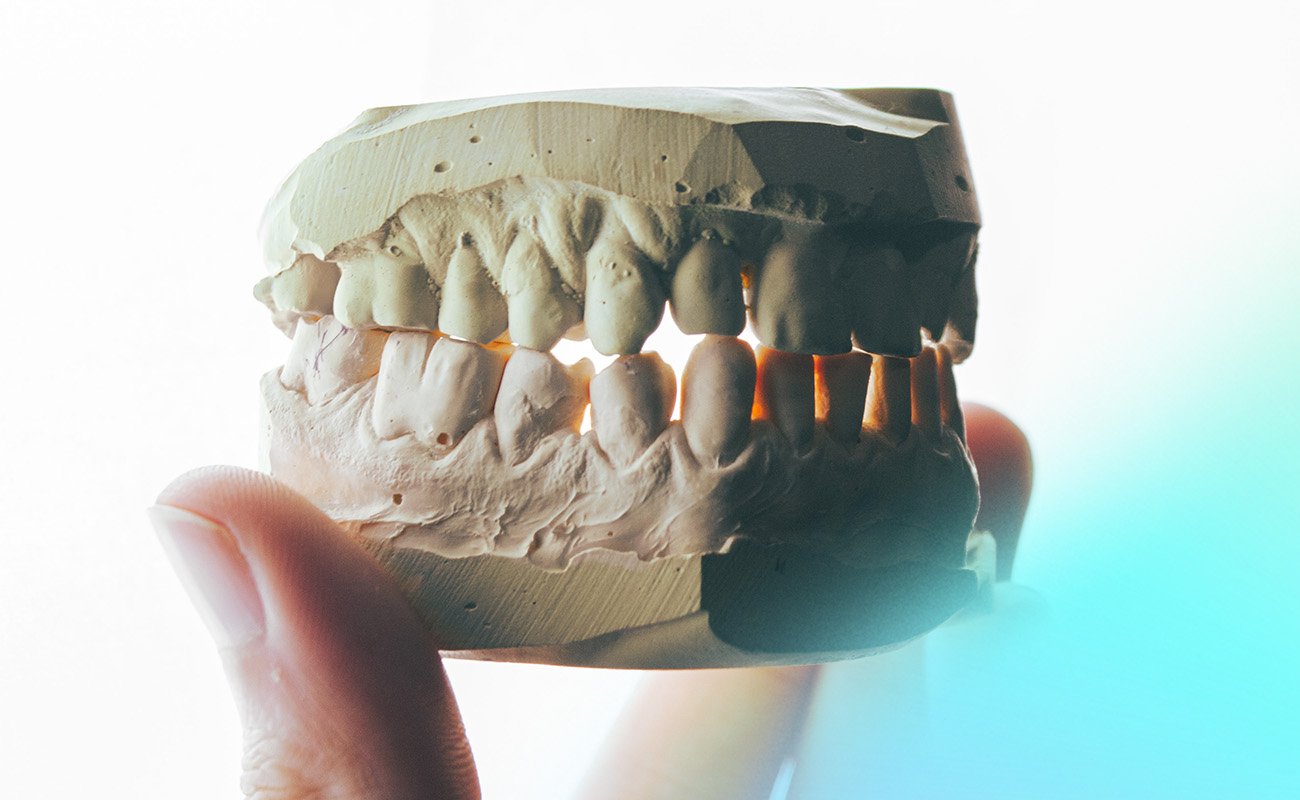Having a perfect, straight, white smile portrayed across media makes it easy to be self-conscious of one’s own teeth. You may dislike the crookedness, gaps, discoloration, or other issues that make you reluctant to flash that toothy grin. However, there are more options now than ever when it comes to transforming your smile and boosting confidence.
This article looks at several treatment options that can help with your self-esteem and bring back your smile. So, if you’re someone who thinks, “I don’t like my teeth,” keep reading to learn how you can take control of your dental health and boost your confidence.
Main Reasons Why People Don’t Like Their Teeth
Many people feel dissatisfied with their teeth for various reasons, which can significantly impact their self-confidence and social interactions. Misalignment is one of the primary concerns, with issues such as crooked, overcrowded, or noticeably gapped teeth leading to both aesthetic and functional challenges.
Discoloration represents another widespread grievance. Factors like diet, smoking, and inadequate oral hygiene can lead to teeth that appear yellowed or are marked by stains, detracting from the brightness of one’s smile. Additionally, the shape and size of teeth can contribute to dissatisfaction. Some individuals may perceive their teeth as too small, creating gaps in their smile, or conversely, too large, which might overshadow other facial features. Unevenly shaped teeth, whether due to natural variations or wear and tear, can disrupt the uniformity of a smile.
Beyond these aesthetic issues, dental health problems such as decay, chipping, or general wear can further mar the appearance of teeth, reducing individuals’ satisfaction with their dental aesthetics. These concerns often prompt people to seek various dental treatments aimed at improving both the health and appearance of their teeth.
Solutions That Will Make Your Teeth Look Better
Metal or Ceramic Braces
Metal and ceramic braces are traditional solutions that have been effectively transforming smiles for decades. Metal braces consist of high-grade stainless steel brackets that are attached to each tooth, connected by a thin archwire which guides the teeth into their correct positions over time. Ceramic braces work on the same principle but feature brackets made of a translucent ceramic material, making them less noticeable and more appealing for those concerned about aesthetics. Both types of braces are adept at correcting a wide range of orthodontic issues, from simple misalignments to complex bite problems.
One of the key advantages of metal braces is their durability and efficiency in handling severe malocclusions. However, their noticeable appearance is often considered a drawback, particularly for adults. Ceramic braces, while more discreet, can be prone to staining if not properly cared for, and they may require a longer treatment time compared to their metal counterparts due to the materials’ lesser strength.
Both options require regular maintenance and adjustments, making oral hygiene paramount to avoid issues like plaque buildup and staining around the brackets.
Lingual Braces
Lingual braces are built with the same materials as traditional braces and consist of brackets and wires. However, they are custom-made to fit the lingual, or tongue side, of the teeth, rendering them virtually invisible from the outside. This customization allows for precise control in correcting a wide range of orthodontic issues, from simple misalignments to more complex bite problems.
The primary advantage of lingual braces lies in their discreet nature. Despite their invisibility, they are just as effective as their traditional counterparts in achieving desired results. However, lingual braces come with certain challenges. Their placement can lead to initial discomfort and irritation to the tongue, and their location makes them more difficult to clean, requiring diligent oral hygiene practices to prevent plaque buildup. Additionally, lingual braces might be a more costly option due to the specialized technique needed for their application and the custom manufacturing of the brackets.
Invisalign or Clear Aligners
Clear aligners are crafted from a transparent, flexible plastic material, and designed using advanced 3D imaging technology to custom-fit the patient’s teeth. The treatment involves a series of aligners, each slightly different, to gradually move teeth into the desired position. One of the standout benefits of Invisalign and similar clear aligners is their near invisibility, making them an attractive option for those who wish to avoid the appearance of traditional braces. They are also removable, allowing for easier eating, brushing, and flossing, thus reducing the risk of staining and promoting better oral hygiene.
However, the success of clear aligners relies heavily on the wearer’s commitment to keeping them in for the recommended 20-22 hours a day, which can be challenging for some. They are best suited for mild to moderate alignment issues, and more complex problems might require alternative treatments.
Many clear aligner brands allow you to order them directly to your home without the need for any appointments so they not only save you time but they can also work out to be a much cheaper option for treatment overall with the same efficiency in results for mild to mid malocclusions.
See our article: Braces By Mail.
Here you can see a selection of reviews for some of the best invisible aligners available:
NewSmile Review – A cheaper option and a monthly payment program with no down payment. A video call is offered to assist you when taking your mouth impressions. A choice of day or night aligners is available and each purchase comes with a free retainer and teeth-whitening foam.

NewSmile
Affordable at-home treatment with positive reviews offering superior look and comfort.
Check out NewSmile AlignersByte Review – A top pick with a lifetime guarantee and 3D simulation.

Byte
An affordable option with refundable impression kits, free HyperByte, and a Byte for Life guarantee.
Check out Byte AlignersCandid Review – The most similar product to Invisalign and offering a high level of customer service. These aligners are suitable for mild to severe teeth spacing issues.

Candid
A hybrid of in-office and at-home treatment that provides 1-on-1 orthodontist support.
Check out Candid AlignersALIGNERCO – The cheapest at-home aligner brand with a monthly payment plan on a zero-down payment agreement. They offer 24/7 live chat support to all customers.

AlignerCo
The cheapest at-home aligners, with monthly plans, no down payment, and considerable discounts.
Check out AlignerCo AlignersVeneers
Veneers are a great solution for those who want to achieve their desired appearance without going through more invasive treatments such as braces. They are made from either composite material or porcelain and are custom-designed to fit over the front or visible portion of the teeth.
Veneers can help address various cosmetic dental issues, such as discolored, chipped, or misshapen teeth. They are also useful in cases where the enamel has worn down, or the teeth have become too short. Veneers are popular due to their versatility, durability, and natural-looking results. They can be used to close gaps between teeth, lengthen teeth, or even give the illusion of a straighter smile.
While they can instantly enhance the appearance of teeth, the process often requires the removal of a small amount of tooth enamel to accommodate the veneer which is irreversible. Additionally, although veneers are durable, they are not indestructible and can chip or break, necessitating costly replacements.
See our article: Teeth Veneers Pros and Cons.
Worth Knowing
The study published in the Journal of Dental Research shows that patient factors, rather than dentist-related factors, significantly influence the longevity of porcelain veneers. It was found that 53% of these veneers remained intact and did not require any re-intervention for up to 10 years.
Dental Bonding
Dental bonding is a cost-effective cosmetic treatment that involves the application of a tooth-colored resin material to the teeth, which is then hardened with a special light, bonding the material to the tooth to improve its appearance. This procedure can be used to repair chips, cracks, discoloration, and minor spacing issues, making it an ideal option for those looking to address aesthetic concerns without extensive dental work. Bonding can also be used to alter the shape or length of teeth. One of the significant advantages of dental bonding is that it usually requires just one visit to the dentist, and involves minimal tooth enamel removal.
However, despite its benefits, dental bonding isn’t without its drawbacks. The composite resin used in bonding isn’t as strong as natural teeth, making the bonded areas more susceptible to chipping or breaking than other cosmetic treatments like veneers or crowns. Additionally, the material can stain over time, requiring replacement or touch-ups to maintain its appearance.
Worth Knowing
Research featured in Clinical Oral Investigations reveals that four years post-procedure, 92.8% of dental bonding treatments remain in excellent condition. The study assessed various aspects such as color match, fit at the edges, surface texture, edge discoloration, wear, shape retention, and cavity prevention, all of which maintained high standards after four years of clinical observation.
Implants
Dental implants offer a permanent solution for missing teeth, providing a foundation for replacement teeth that look, feel, and function like natural teeth. They are composed of titanium posts that are surgically inserted into the jawbone, where they fuse with the bone over time—a process known as osseointegration. This fusion creates a sturdy base for supporting artificial teeth, such as crowns, bridges, or dentures.
The benefits of dental implants extend beyond their cosmetic appeal; they also help preserve facial structure by preventing bone deterioration that occurs when teeth are missing. Furthermore, implants do not require altering adjacent teeth, as is necessary with traditional bridgework, preserving more of the patient’s natural tooth structure.
However, dental implants are not without their drawbacks. The process of getting implants is typically lengthy, requiring several months for complete integration and healing. It’s also one of the more costly dental treatments, and certain health conditions or insufficient bone density can preclude some patients from being viable candidates.
Teeth Whitening
Teeth whitening is a popular cosmetic dental procedure aimed at lightening the natural color of teeth without removing any of the tooth surfaces. It can significantly enhance the appearance of a smile by addressing discoloration and stains caused by factors such as coffee, tea, red wine, tobacco, and aging. The process typically involves the application of a bleaching agent, often containing hydrogen peroxide or carbamide peroxide, which breaks down, allowing oxygen to enter the enamel and dentin, thereby lightening the tooth color.
There are various methods of teeth whitening, ranging from professional treatments administered by dentists to over-the-counter products like whitening toothpastes, strips, and trays. Professional whitening offers immediate and noticeable results, often within a single session, making it a favored choice for those seeking quick improvements.
However, teeth whitening is not without its downsides. Some individuals may experience tooth sensitivity or gum irritation as a result of the bleaching agents. The effectiveness of whitening can also vary depending on the type of discoloration and the condition of the teeth; for example, it may not be as effective on teeth that have turned grayish in tone or on discoloration resulting from medication or injury. Moreover, teeth whitening is not a permanent solution; dietary habits, smoking, and the natural aging process can lead to the recurrence of discoloration, necessitating periodic retreatment to maintain the desired results.
See our reviews of the best whitening products
Moon Whitening Device is a rapid and effective teeth-whitening solution, capable of achieving up to 12 shades of whitening in two weeks with five-minute daily sessions. It’s user-friendly, featuring a lightweight, wireless, and water-resistant design, and comes with peppermint-flavored dissolving whitening strips. The device is gentle on tooth enamel and is clinically proven and dentist-approved. See our review of Moon Teeth Whitening Device.
- LED LIGHT TEETH WHITENING KIT. MOON’s easy to use Teeth Whitening Device uses a fast-acting LED light and simple, no-mess dissolvable teeth whitening strips to streamline your premium beauty routine for truly noticeable dental results. Make your mouth happy with a brighter, whiter smile and achieve those tooth whitening goals with MOON’s incredible, modern, teeth whitening kit.
Snow Magic Teeth Whitening Strips offer an eco-friendly solution for a brighter smile with their unique self-dissolving feature, eliminating the need for plastic backings. Available in 28 or 56 packs, they come with a 60-day money-back guarantee and are the top-selling whitening product in stores like Neiman Marcus and Macy’s. See our review of Snow Magic Teeth Whitening Strips.
- EFFORTLESS WHITE SMILE: Whiten your teeth using our easy-to-apply and non-slip Snow Magic Strips! Our teeth whitening strips are your on-the-go companions, which you can conveniently place anywhere and use whenever you need to. They are safe for enamel, can help remove stains from coffee or wine, and instantly give you fresher breath with its refreshing flavor.
Spotlight Teeth Whitening Strips offer easy, dentist-designed whitening with clinically proven results. They’re free from harmful chemicals, vegan, cruelty-free, and come in recyclable packaging. Each pack includes a gum oil pen to reduce sensitivity, and the strips have a refreshing spearmint flavor. See our review of Spotlight Teeth Whitening Strips.
- ABOUT THE PRODUCT: The Spotlight Oral Care Teeth Whitening Strips contain a full 14-day course of our Whitening Strips as well as a Comforting Gum Oil to ensure minimal sensitivity. This system gently whitens teeth safely at home while providing long lasting results. Using our strips for one hour daily, combined with our Comforting Gum Oil provides bright teeth without sensitivity.
Can You Fix Your Teeth Naturally?
The notion of naturally fixing teeth often revolves around maintaining and improving dental health through non-invasive, holistic approaches rather than undergoing dental treatments or surgeries. While minor dental issues like slight discoloration or early signs of decay can be addressed through improved oral hygiene practices, dietary changes, and the use of specific natural remedies, it’s important to understand the limitations of such approaches.
Good oral hygiene practices, including regular brushing with fluoride toothpaste, flossing, and using mouthwash, can help prevent further dental issues and potentially reverse early stages of decay. Dietary changes, such as reducing sugar intake and consuming foods rich in vitamins and minerals that support tooth health, can also contribute to stronger, healthier teeth.
However, more significant dental problems, such as advanced decay, large cavities, misalignment, or severe discoloration, generally require professional dental intervention to correct. While natural methods can support overall dental health and prevent some issues, they cannot replace the need for professional dental treatments like fillings, orthodontics, or restorative procedures in cases of serious dental health concerns.
See our article: How to Straighten Teeth Without braces or Invisalign?
Worth Knowing
Tooth enamel, even though it is the hardest tissue in the body, is not living tissue, which means it cannot be naturally regenerated.
Click HereFrequently Asked Questions
What should I Do if I Don’t Like My Teeth?
A professional whitening treatment could be great if the problem is just discoloration. Veneers offer a great way to cover up chips and cracks in teeth and help keep them looking neat. For more significant problems, braces or clear aligners are a good solution depending on the severity of the issue.
How to Smile if I Don’t Like My Teeth?
One great way to make use of a smile without having to show off your teeth is by using a closed-lip smile. This involves simply curving your lips into a small smile while keeping them firmly shut. While it might not be as wide or joyous as an open-mouth smile, it still conveys warmth and friendliness.
Sources
Demirci, M., Tuncer, S., Öztaş, E., Tekçe, N., Uysal, O., A 4-year clinical evaluation of direct composite build-ups for space closure after orthodontic treatment. Clin Oral Investig. 2015 Dec;19(9):2187-99. doi: 10.1007/s00784-015-1458-8. Available online at: https://pubmed.ncbi.nlm.nih.gov/25802222/
https://www.grandviewresearch.com/industry-analysis/teeth-whitening-market-report
Burke, F. J. T., Lucarotti, P. S. K., Ten-year outcome of porcelain laminate veneers placed within the general dental services in England and Wales; J Dent, 2009. DOI: 10.1016/j.jdent.2008.03.016. Available online at: https://pubmed.ncbi.nlm.nih.gov/18538912/
Ke, Y. et al. A comparison of treatment effectiveness between clear aligner and fixed appliance therapies. BMC Oral Health. 2019. doi: 10.1186/s12903-018-0695-z Available online at: https://www.ncbi.nlm.nih.gov/pmc/articles/PMC6343314/




